If you’re like me, you love adding new plants to your home décor. Not only do they make your space look beautiful, but they also offer a host of benefits that can improve your health and well-being. Today I’m going to talk about one of my favorite plants: the snake plant.
Snake plants are so named because of their long, thin leaves that can remind one of a snake. These plants are tolerant of a wide range of conditions and are perfect for people who don’t have a lot of time to care for their plants, as they don’t require much water or sunlight. In fact, they can even be grown in low light conditions.
All in all, snake plants are also known for being tough plants – they can withstand a lot of abuse and still thrive. So if you’re not confident in your plant parenting skills, the snake plant is a good choice.
Snake Plant Benefits
While most people wouldn’t think of keeping a snake plant at home, there are actually many benefits to doing so! Snake plants are easy to care for, and they produce oxygen at night, making them perfect for bedrooms. They also help filter out toxins from the air, making them ideal for homes with pets or smokers.

So if you’re looking for an easy-to-maintain plant that can improve your indoor air quality, a snake plant is a great option. Here are just a few reasons why you should consider adding a snake plant to your home décor.
Snake Plants are Hardy
There’s a good reason why the snake plant is one of the most popular plants to have at home – it’s practically indestructible! Seriously, I actually TRIED killing one in my front yard by hacking at it and then neglecting it last year and this spring a bunch of new baby pups have popped up.
This means that even if you’re the worst plant parent ever, your snake plant will probably still be alive. (Just don’t put it in direct sunlight or overwater it – that’s when things can start to go wrong.)
Snake Plants Produce Oxygen at Night
One of the best things about snake plants is that they produce oxygen at night. Most plants produce oxygen during the day, but at night they actually consume oxygen and give off carbon dioxide. This can make bedrooms very stuffy and uncomfortable to sleep in. But since snake plants produce oxygen at night, they help improve the air quality in your bedroom – and that can lead to a better night’s sleep.
Snake Plants Help Filter Out Toxins
Another great benefit of snake plants is that they help filter out toxins from the air. Studies have shown that these plants can remove up to 87% of toxins like formaldehyde and benzene from the air. In fact, they’re even on NASA’s list of air-purifying plants. So if you’re looking for a way to improve your indoor air quality, a snake plant is a great option, especially for those with allergies or asthma.
Snake Plants Can Help Reduce Sound
Snake plants are also known for their ability to absorb noise. Yes, you read that right! Plant parts such as stems, leaves, branches, wood, etc. absorb sound. Due in part to their dynamic surface area, rough bark and thick fleshy leaves are highly effective at absorbing noise. So if you live in a noisy area or have loud roommates, a snake plant might be a good option for you.
So now you want one (or ten) right? So let’s talk about what they are, where to get them and how to care for them.
What is a Snake Plant?
The most common Snake Plant is Sansevieria Trifasciata, also sometimes called Mother-in-Law’s Tongue. This evergreen perennial is native to Africa, where it grows in the arid regions of the continent. The plant gets its common name from its long, thin leaves that can range in color from green to yellow.
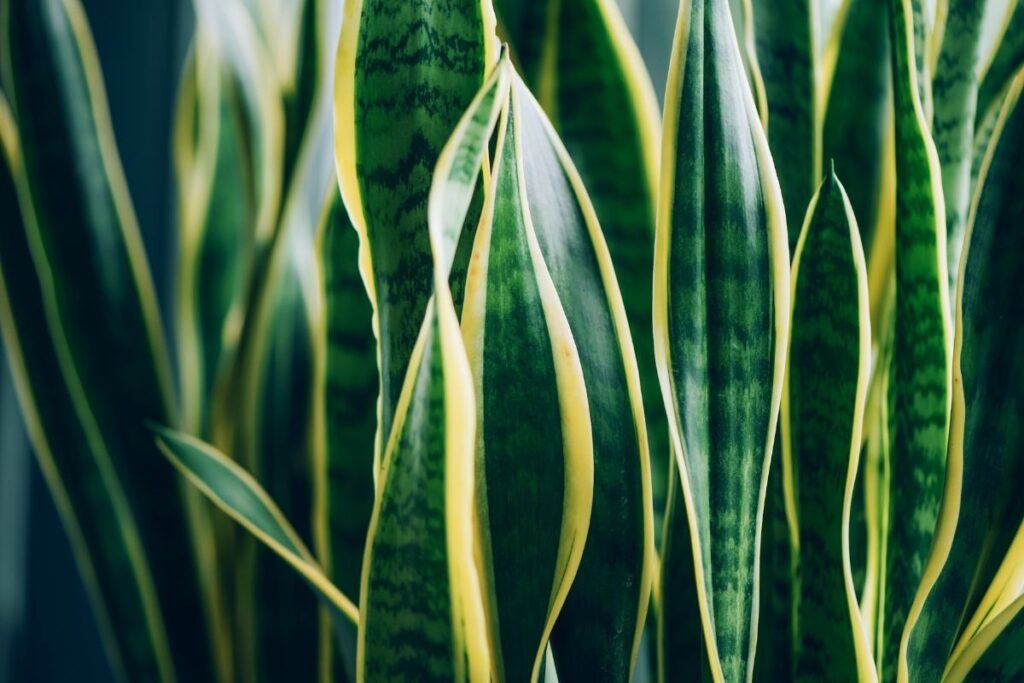
The snake plant is actually a succulent, meaning it has thick leaves that store water. This allows the plant to survive in conditions that would kill other plants, such as low light or periods of drought.
Snake Plant Varieties
There are many different varieties of snake plants, with leaves that range in color from green to yellow and even variegated (a mix of two colors). Some interesting varieties include:
Twisted Sister Snake Plant (Sansevieria trifasciata ‘Twisted Sister’)
This is a compact variety that grows up to 15 inches tall with twisty leaves. Because of the twists, the Twisted Sister Snake Plant appears a bit bushier and reminds me of a head of crazy hair or some people say it looks like a bird’s nest. Its unique look makes it one of my favorites.
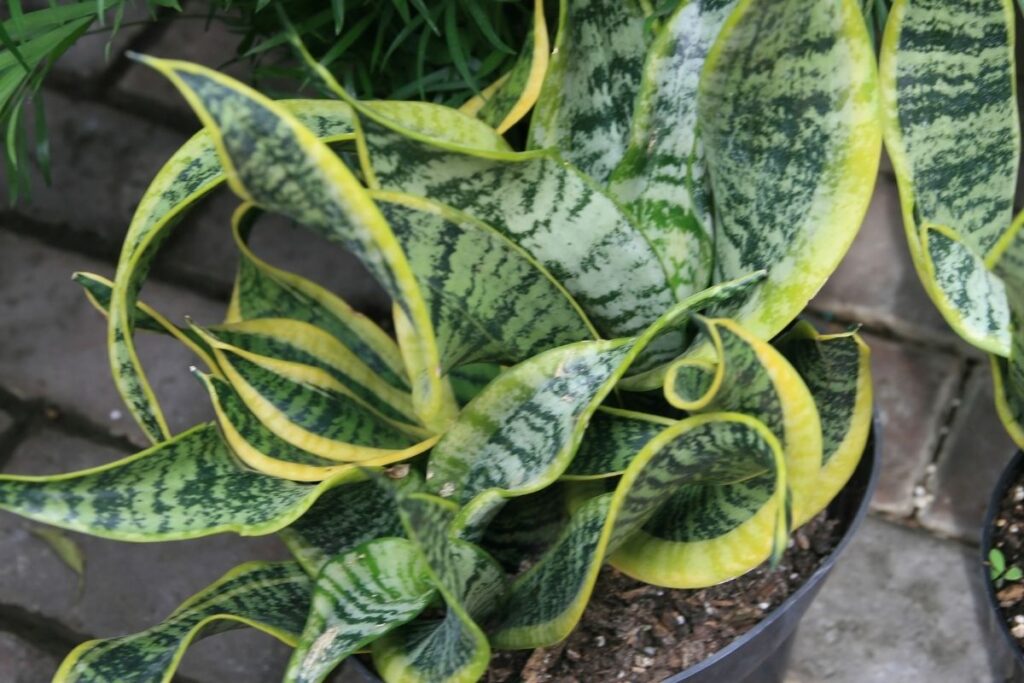
Moonshine Snake Plant (Sansevieria ‘Moonshine’)
This is a beautiful silver/grey wide-leafed variety that can grow up to 2 feet tall. The Moonshine Snake Plant gets its name from its light/pale green color which looks like the moonlight glistening off the leaves.
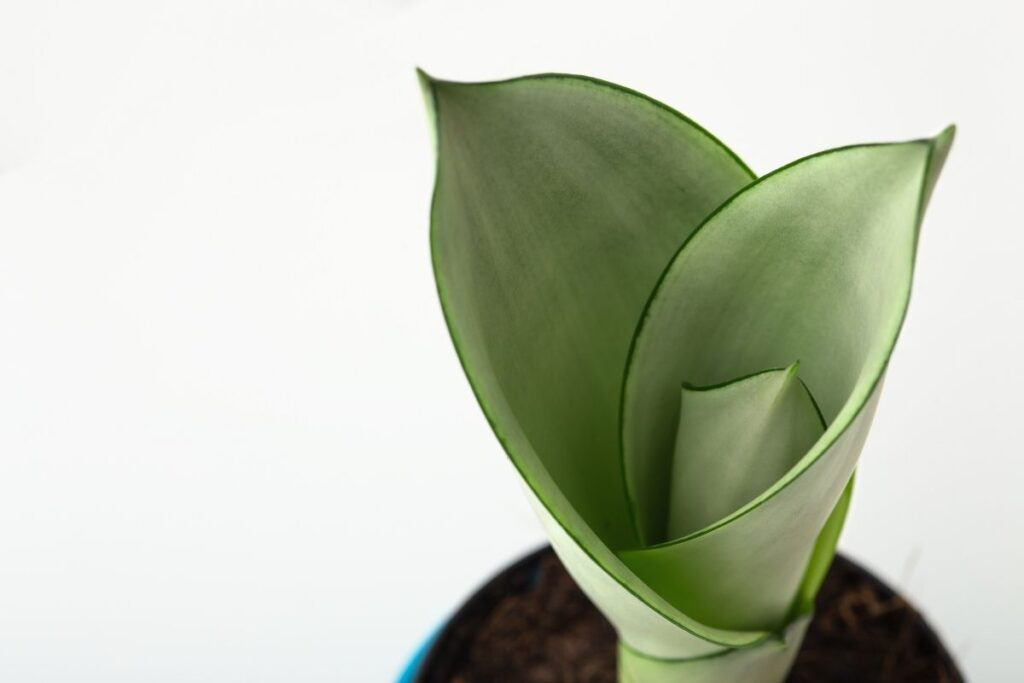
Golden Hahnii Snake Plant (Sansevieria trifasciata ‘Hahnii’)
This is one of the smallest varieties of Snake Plant that only grows to about 6 inches tall. So cute!! The leaves are short, fat, and bright green with yellow margins. They tend to fan and fall outward from the center making it look like a flower.
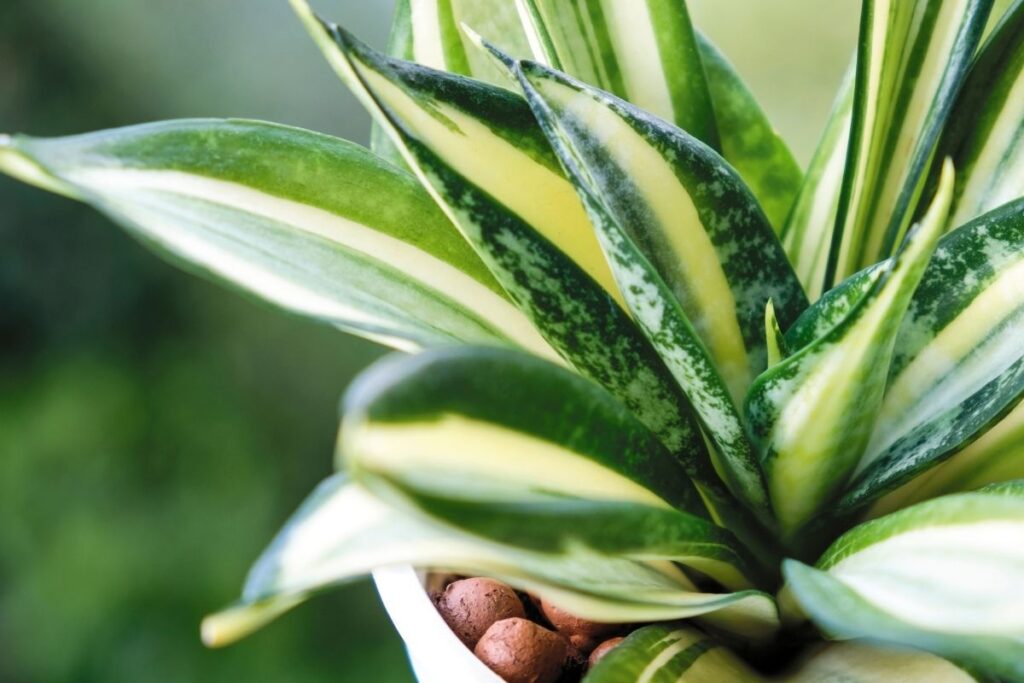
Elephant Tusks Snake Plant (Sansevieria stuckyi)
This is one of the tallest varieties of snake plants, growing up to 7 feet tall while staying within about a 1-foot diameter. The leaves are slender, upright, and cylindrical. They get their name from their resemblance to elephant tusks.
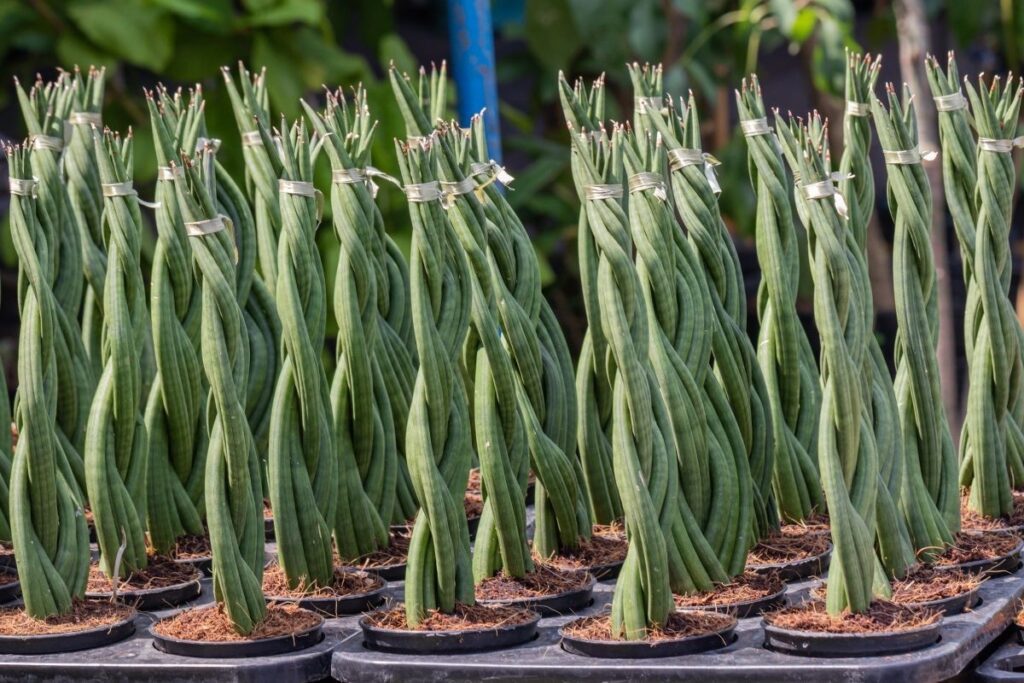
Black Coral Snake Plant (Sansevieria trifasciata ‘Black Coral’)
Another one of my favorites, this variety has very dark green (sometimes black) leaves with interesting light green or gray cross-banding. Also known as Saint George’s sword, the leaves are more triangular than other varieties and can grow up to 3 feet tall.
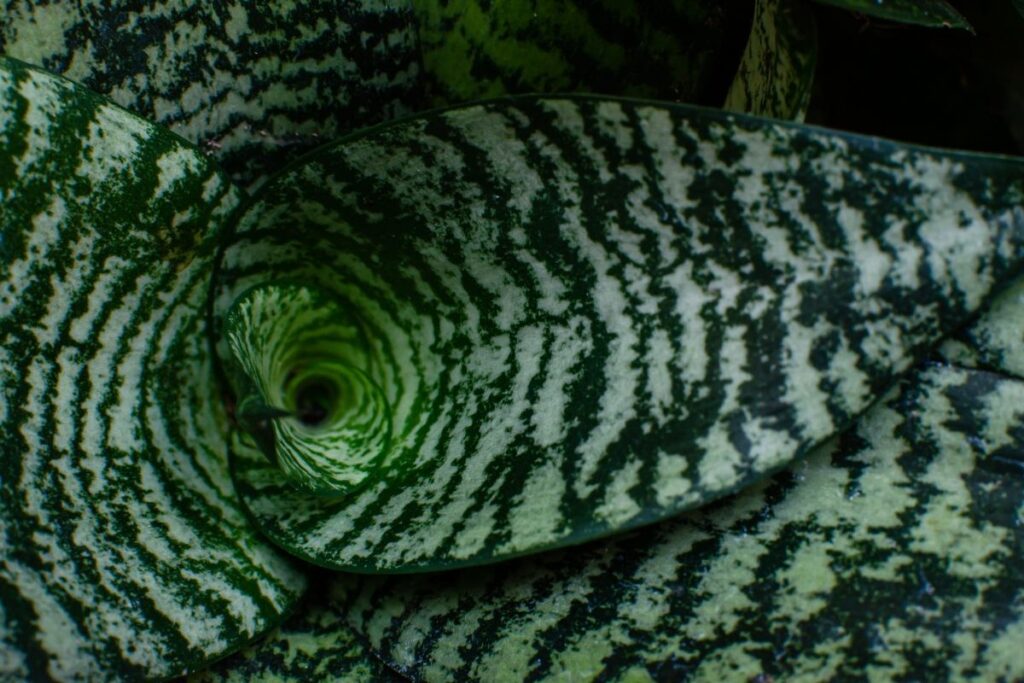
Starfish Snake Plant (Sansevieria cylindrica ‘Boncel’)
This compact dwarf version of the more common Sansevieria cylindrica is a bit hard to find, but its unique fan or starfish shape makes it worth the search (and cost) for some.
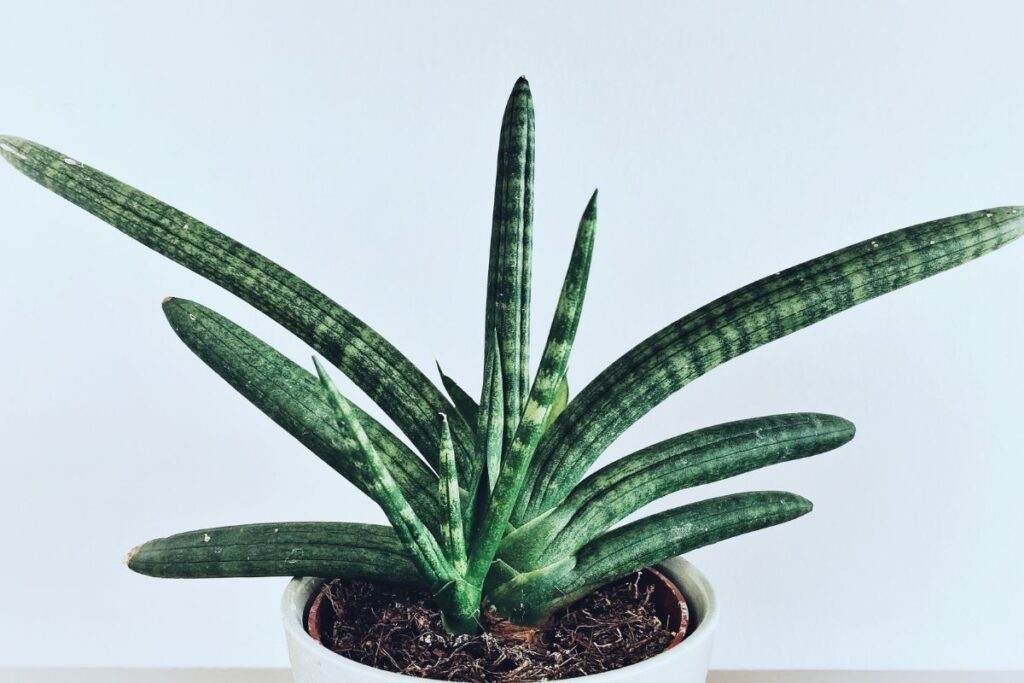
Whale Fin Snake Plant (Dracaena masoniana)
If you want a showstopper, the Whale Fin Snake Plant might be the one for you. It is known for its huge paddle-like leaves that are similar in shape to the fins of a whale (or shark). It’s a slow grower that can reach up to 6 feet tall, making it one of the taller varieties.
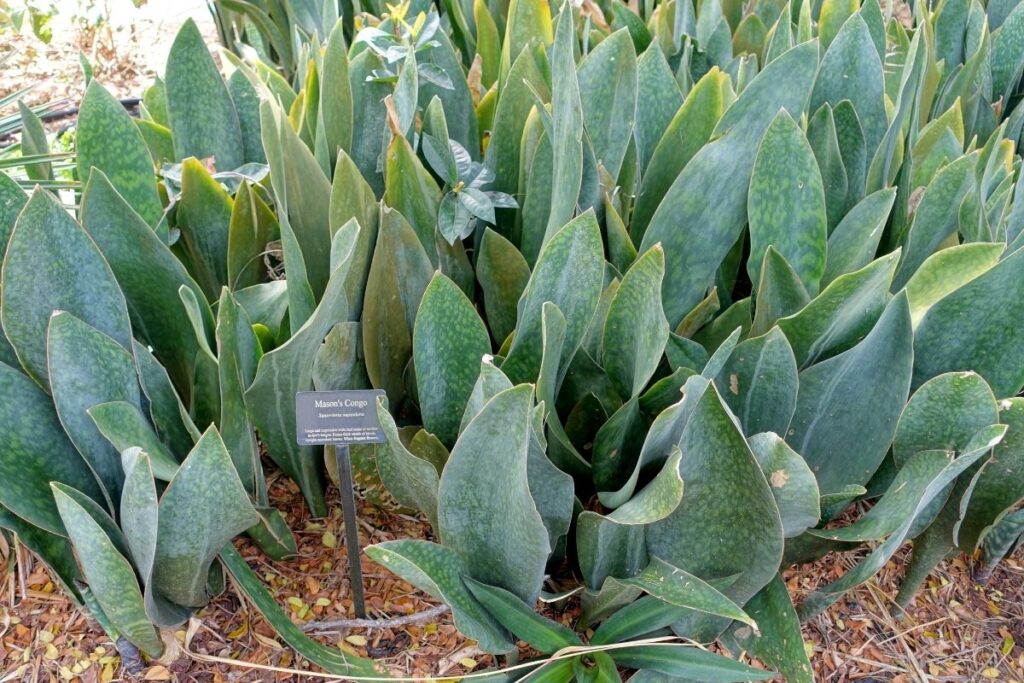
What is a Rattlesnake Plant?
Although the name is similar, the Rattlesnake plant (Goeppertia insignis, formerly Calathea lancifolia) is not part of the Snake Plant family. It is a Marantaceae, in the same family as the Prayer Plant and Arrowroot.
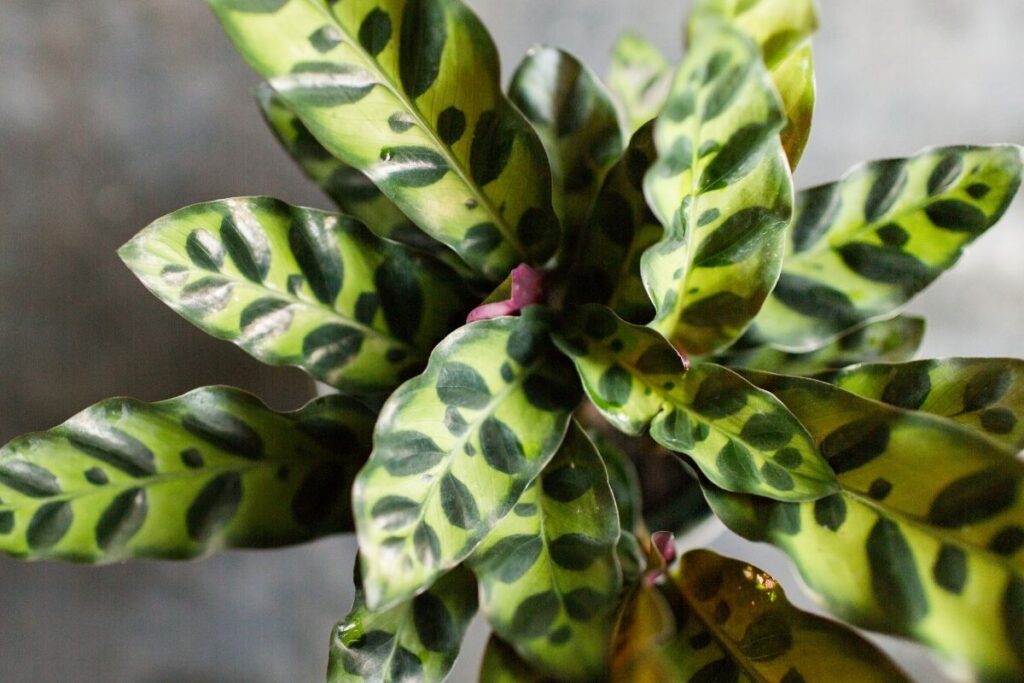
The Rattlesnake plant is a perennial native to Brazil. It has long, wide lance-shaped leaves that are dark green with light green markings running down the center, hence its name. The leaves are stunning and although this plant is often seen growing in shaded outdoor areas of zones 11-12 like Hawaii and Florida, it is most commonly kept as a houseplant or in terrariums elsewhere.
Rattlesnake plants are popular houseplants because of their beautiful variegated leaves but unlike the Snake Plant, they are not for beginners. This tropical native needs lots of humidity and heat to thrive. They are not easy to care for and they do not tolerate a wide range of conditions.
Where to Buy Snake Plants
You can buy snake plants at most nurseries or garden centers, but if you want one of the more unique varieties, I would suggest an online source like Etsy. You could also try to find a community plant swap near you or host your own! Perhaps a friend has one you can split a pup from or take a leaf cutting to propagate your own.
Just remember that when you’re buying a snake plant, make sure to look for one that has healthy leaves and is not rootbound. Also, be sure to check the plant’s tag for its best lighting conditions – some varieties of snake plants can tolerate direct sunlight, but others will burn if they’re in too much sun.
How to Care for a Snake Plant
Now that you know all about the different types of snake plants, let’s talk about how to care for them. As I mentioned before, these plants are very tough and can withstand a wide range of conditions. Here are some tips:
How Often to Water Snake Plant
One of the reasons I love snake plants is because they are so easy to care for. These hardy plants don’t require much water, so you can let them dry out completely between watering. In fact, too much water is one of the most common ways people kill their snake plants.
A clear sign of overwatering your snake plant is drooping leaves. You may also see yellowing or browning leaves which indicates root rot. If you see this happening, hold off on watering for a week or two and see if the leaves improve. If they don’t, it’s possible the root system is rotting and the plant needs to be repotted.
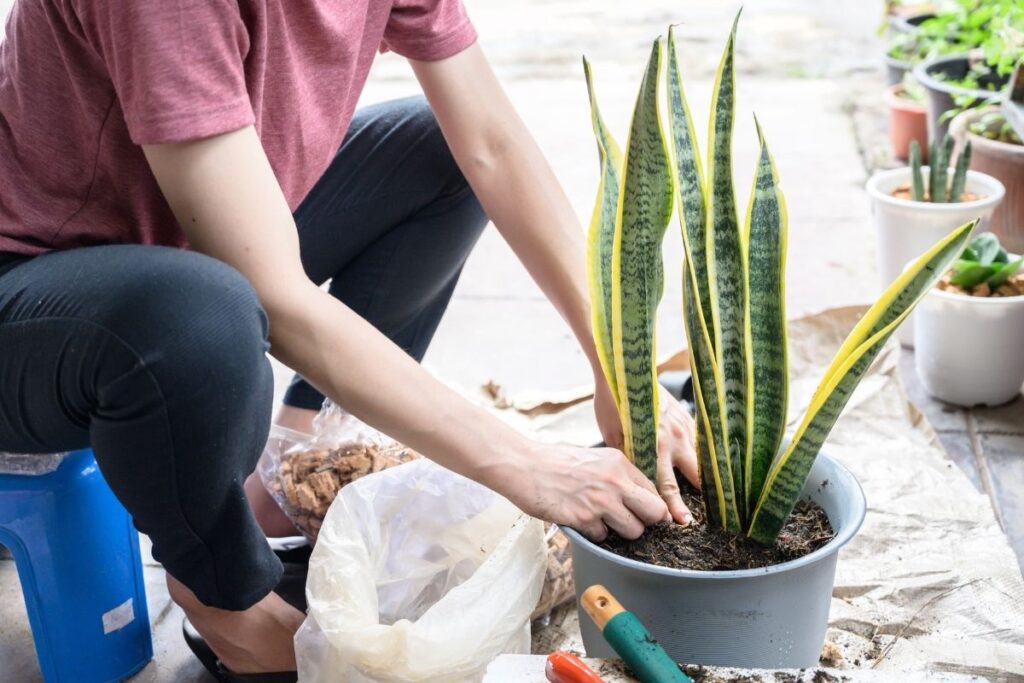
The best way to water a snake plant is to give it a good soaking and then let the soil dry out completely between waterings. I like to stick my finger in the soil to see how dry it is before watering. If the top couple inches of soil are dry, it’s time to water.
I recently just switched to these moisture meter sticks for my indoor plants and while they are a little pricey, they are totally worth it. With cats, most of my plants hang on walls high out of reach. I love being able to see from a distance if they need watering or not, without having to get out my ladder or chair.
If you’re not sure how often to water, it’s better to err on the side of too little rather than too much.
Fertilizing Snake Plants
Snake plants don’t need much fertilizer, but you can give them a little boost in the spring and summer if you’d like. I like to use Joyful Dirt an organic, all-purpose fertilizer I use on all my houseplants.
You can also fertilize your snake plant with compost or manure tea. Just be sure not to overdo it – too much fertilizer will burn the roots of your plant.
Lighting Conditions for Snake Plants
One of the best things about snake plants is that they are very tolerant of different light conditions. They can grow in anything from full sun to low light, although they will thrive and produce more leaves in brighter light.
If you’re not sure how much light your plant is getting, you can use a light meter to measure the light intensity. I like this one because it’s also a moisture meter and I use it for my outdoor plants.
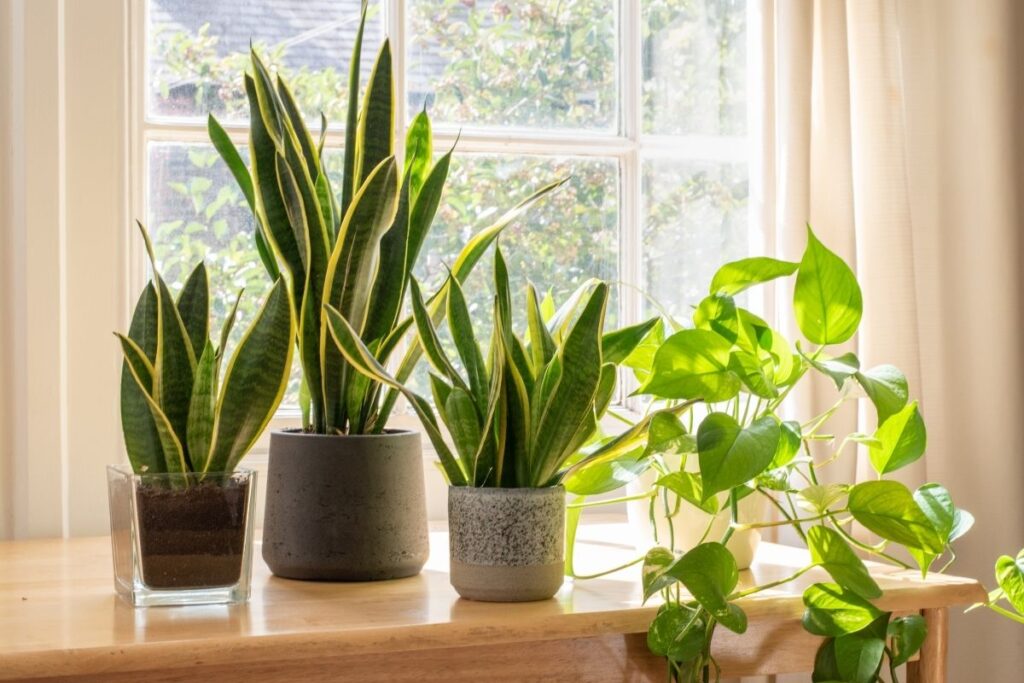
When it comes to snake plants, more light is usually better. These plants are very tolerant of different light conditions, but they will do best in bright, indirect light. If you can’t provide bright light, don’t worry – these plants will still do fine in lower light conditions.
Temperature for Snake Plants
Another great thing about snake plants is that they can tolerate a wide range of temperatures. They’re native to Africa, so they’re used to hot dry climates. However, they will also do fine in cooler temperatures as long as they’re not exposed to freezing temperatures.
The ideal temperature for snake plants is between 55 and 85 degrees Fahrenheit. Warmer temperatures encourage more growth. Just make sure to keep them out of drafts and away from heat sources such as vents or fireplaces.
Humidity for Snake Plants
Snake plants are native to dry, tropical climates, so they don’t need much humidity. In fact, too much humidity can actually be detrimental to these plants. If the air is too humid, it can cause the leaves to rot or develop brown spots, so do not mist your snake plant!
Soil for Snake Plants
Snake plants do best in well-draining soil that is slightly sandy. They will also do fine in a standard potting mix as long as it drains well. If your soil doesn’t drain well, you can improve it by mixing in some perlite or sand. I like to use a ratio of 2 parts potting mix to 1 part perlite or sand.
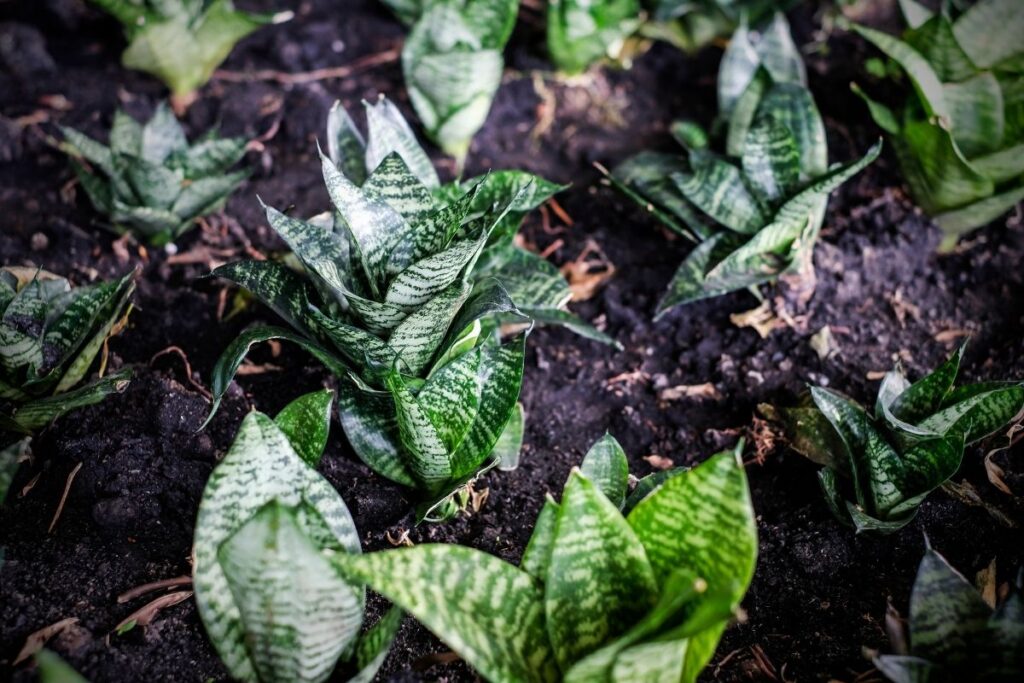
Pests and Diseases
Snake plants are relatively resistant to pests and diseases, but they can be susceptible to mealybugs, spider mites, and fungal diseases such as root rot if they’re grown in too much humidity.
To prevent pests and diseases, it’s important to grow your snake plant in well-draining soil and to avoid overwatering. If you do notice any problems, you can treat them with an organic pesticide or fungicide.
How to Propagate Snake Plants
If you want more snake plants, you can easily propagate them by splitting an existing plant or taking a leaf cutting. The best time to take cuttings is in the spring or summer when the plant is actively growing.
Are Snake Plants Toxic to Pets?
Yes, snake plants are toxic to cats and dogs. The toxins in these plants can cause nausea, vomiting, diarrhea, and drooling. If your cat or dog ingests a snake plant, it’s important to seek veterinary care immediately.
If you have fur babies and choose to also have snake plants in your home, please be sure to keep them out of reach of your pets at all times.



